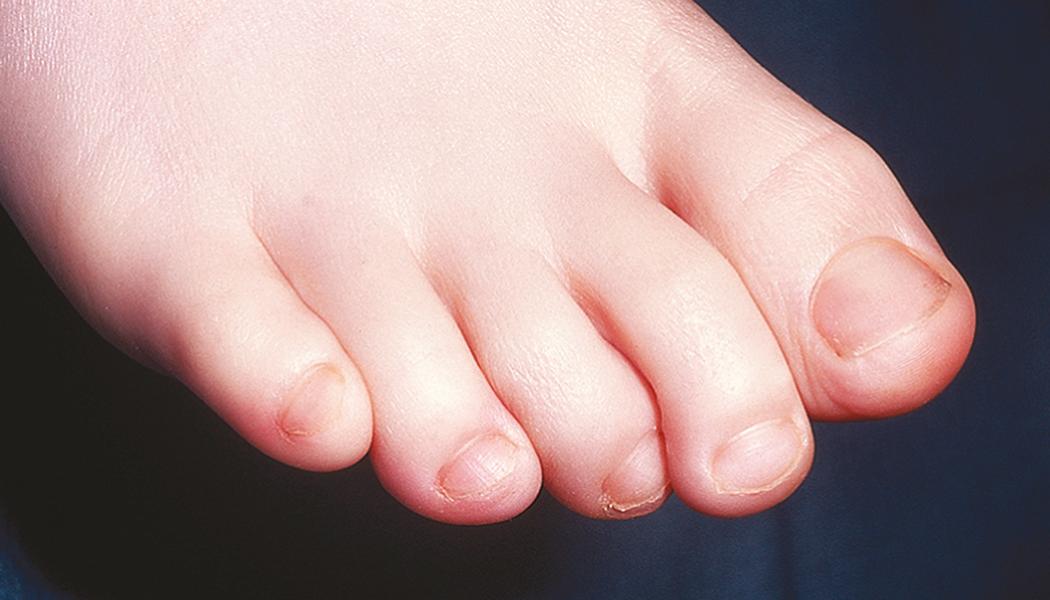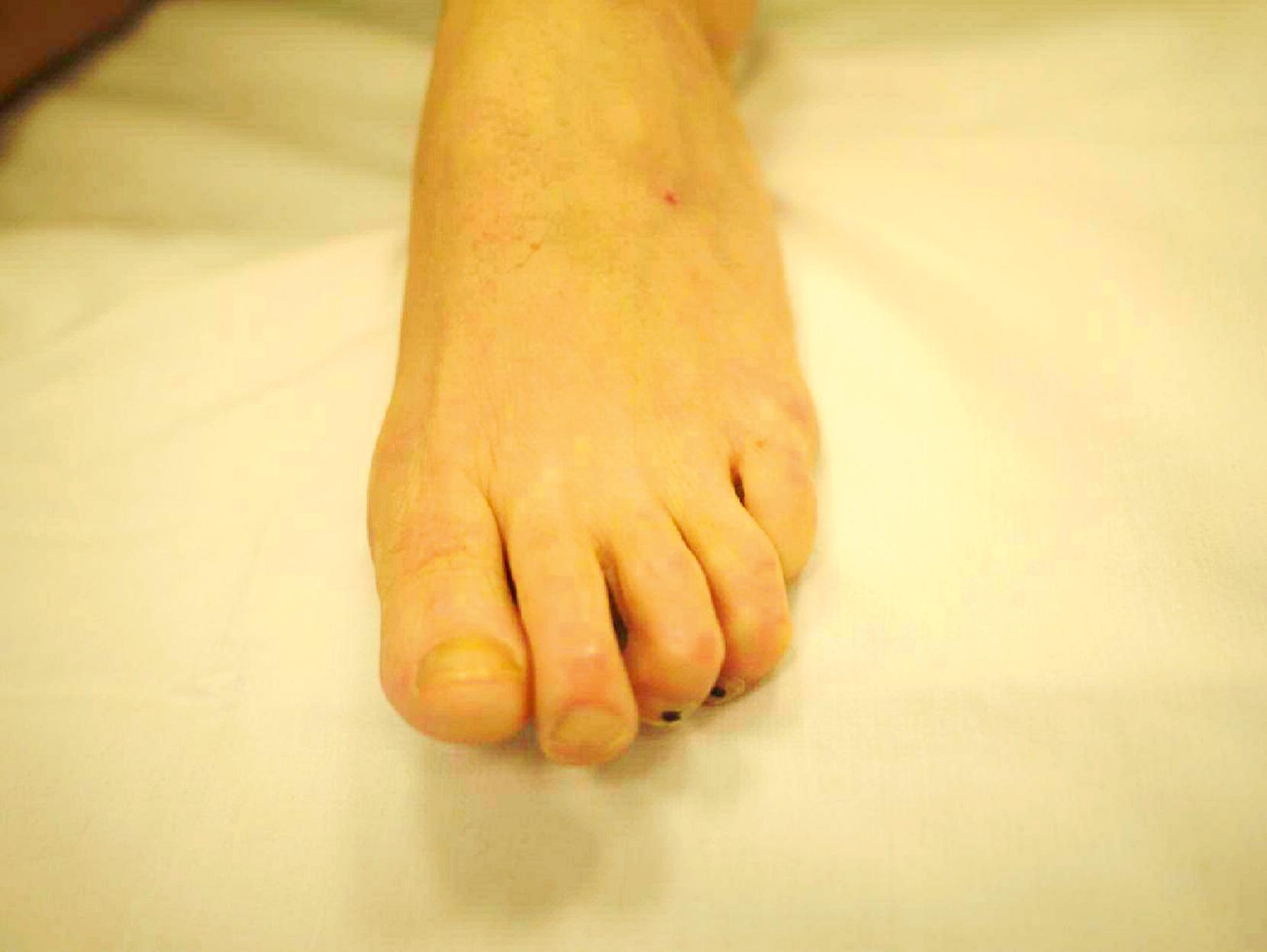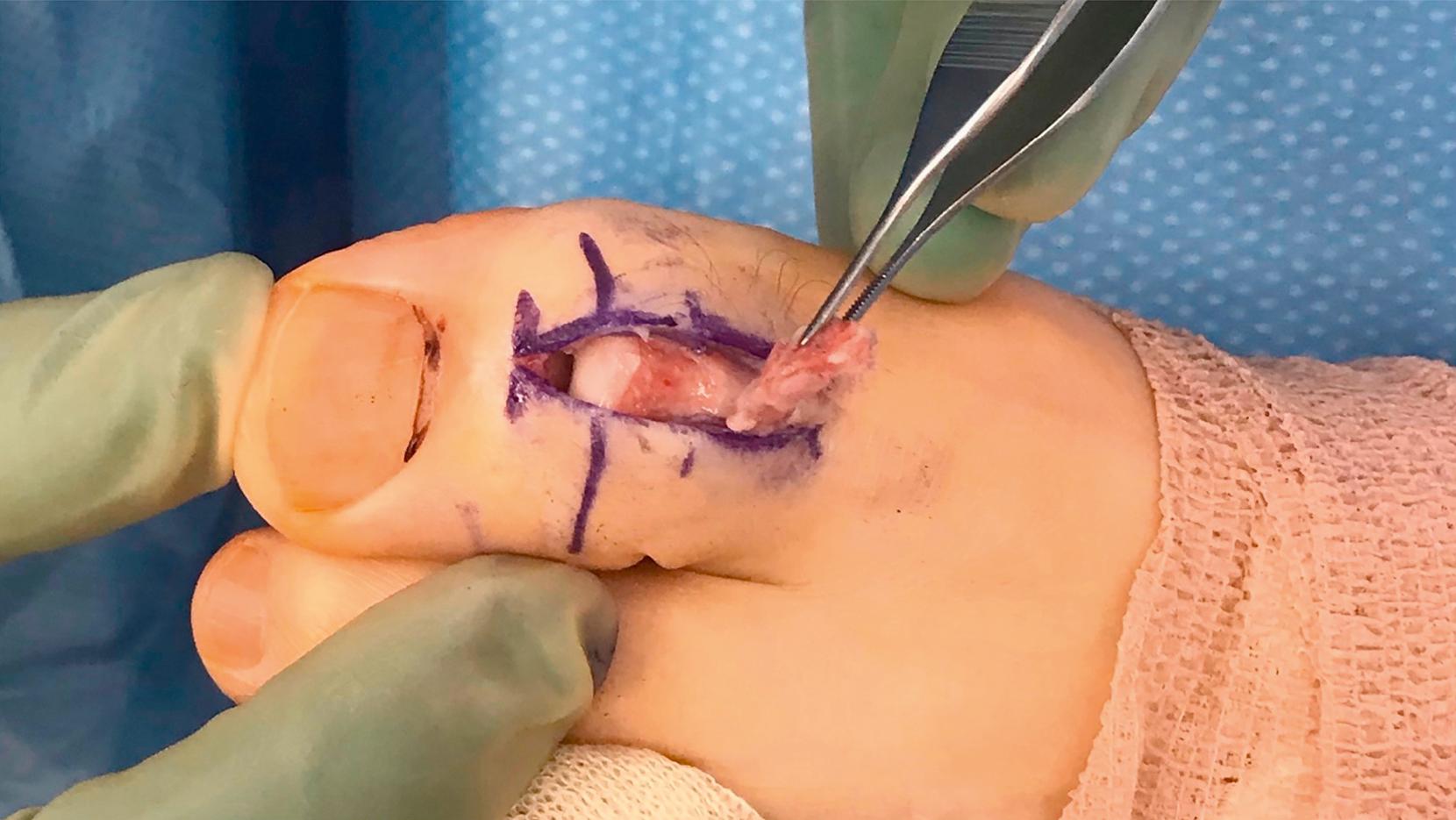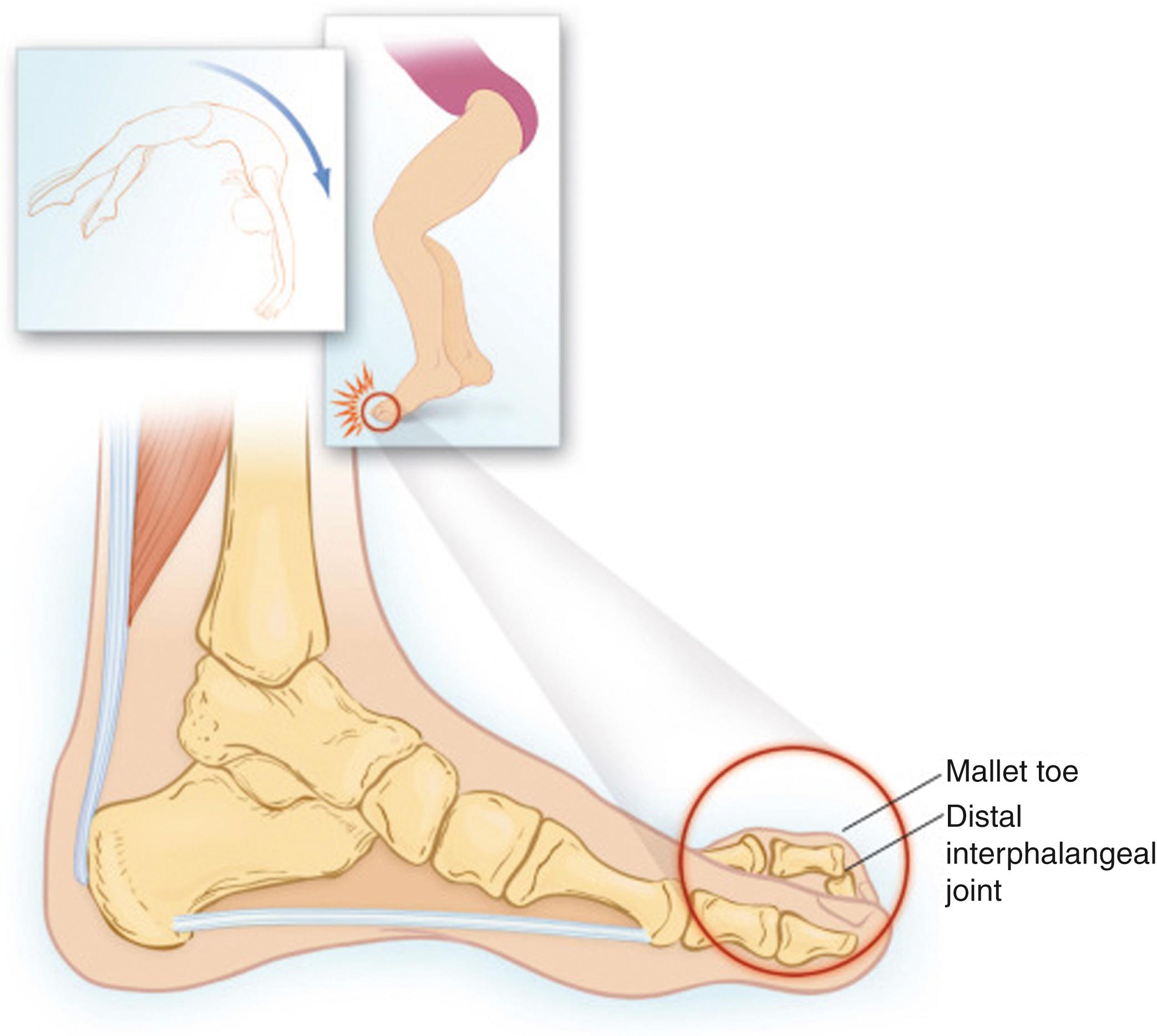Physical Address
304 North Cardinal St.
Dorchester Center, MA 02124
The term mallet toe refers to a constellation of symptoms including a painful flexion deformity of the distal interphalangeal joint ( Fig. 195.1 ). The second toe is affected most often, but all other toes and rarely the great toe can also be affected ( Figs 195.2 and 195.3 ). Mallet toe usually is a result of a jamming injury to the second toe, although, like bunion, bunionette, and hammer toe, the wearing of tight, narrow-toed shoes also has been implicated ( Fig. 195.4 ). As with a bunion and bunionette, the mallet toe deformity occurs more often in women. The development of an inflamed adventitious bursa may accompany mallet toe formation and may contribute to the patient’s pain. A callus or ulcer overlying the tip of the affected toe also may be present (see Fig. 195.2 ; Fig. 195.5 ). Wearing high-heeled shoes may exacerbate the problem.




![FIG. 195.5, Foot of a diabetic patient with osteomyelitis of the distal phalanx of an insensate second mallet toe (distal interphalangeal [DIP] joint contracture). Disarticulation at the DIP joint removed the infective focus and shortened the prominent toe. Previous metatarsophalangeal joint disarticulation of the great toe had exposed the second toe to distal trauma from a shoe. FIG. 195.5, Foot of a diabetic patient with osteomyelitis of the distal phalanx of an insensate second mallet toe (distal interphalangeal [DIP] joint contracture). Disarticulation at the DIP joint removed the infective focus and shortened the prominent toe. Previous metatarsophalangeal joint disarticulation of the great toe had exposed the second toe to distal trauma from a shoe.](https://storage.googleapis.com/dl.dentistrykey.com/clinical/InjectionTechniqueforMalletToePainSyndrome/4_3s20B9780323828260001954.jpg)
The majority of patients with mallet toe experience pain localized to the affected distal interphalangeal joint and the inability to get shoes to fit. Walking makes the pain worse; rest and heat provide some relief. The pain is constant and characterized as aching. Some patients report a grating or popping sensation with use of the joint, and crepitus may be present on physical examination. In addition to the previously mentioned pain, patients with mallet toe develop a characteristic deformity consisting of a painful flexion deformity of the distal interphalangeal joint. Unlike with bunion and bunionette, alignment of the toes is relatively normal.
Plain radiographs are indicated for all patients with mallet toe pain. On the basis of the patient’s clinical presentation, additional testing may be indicated, including complete blood cell count, sedimentation rate, and antinuclear antibody testing. Magnetic resonance imaging of the toe is indicated if joint instability, occult mass, or tumor is suggested.
Become a Clinical Tree membership for Full access and enjoy Unlimited articles
If you are a member. Log in here